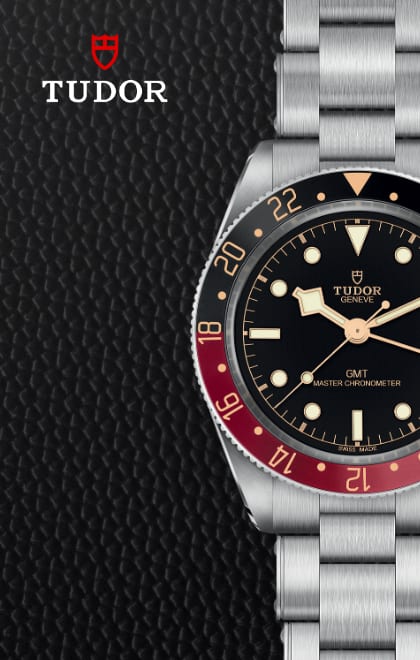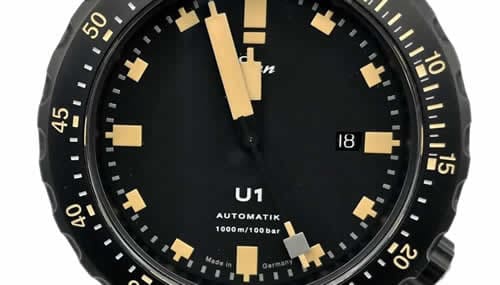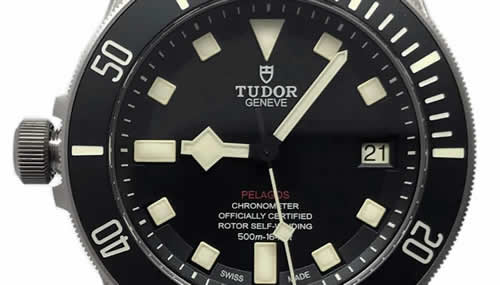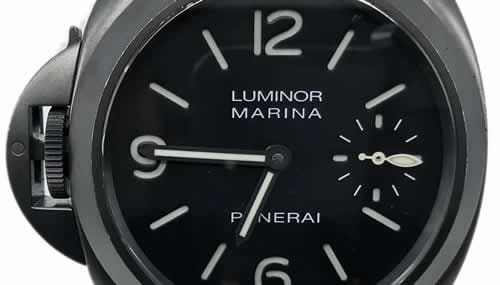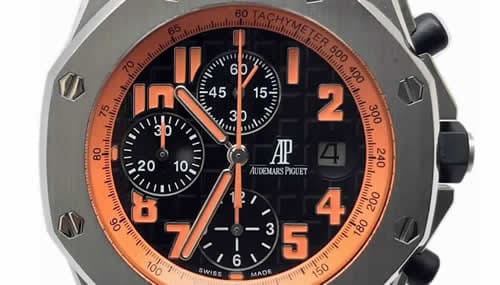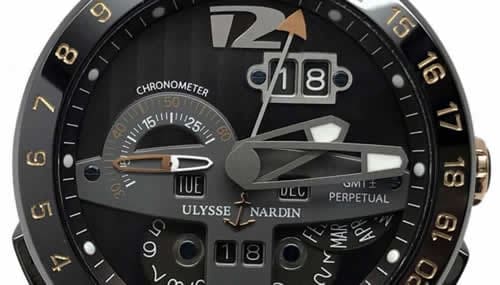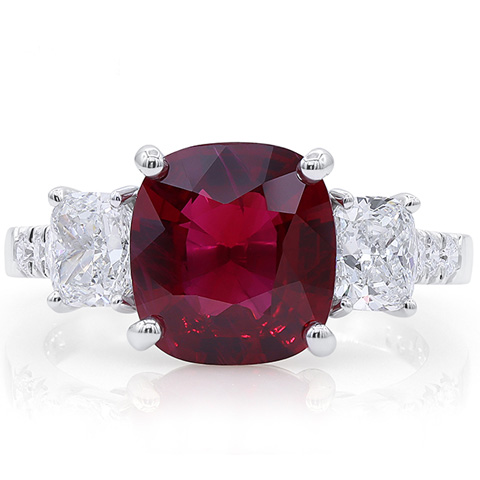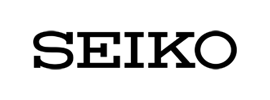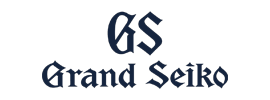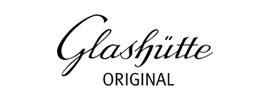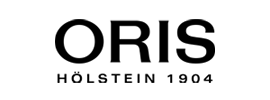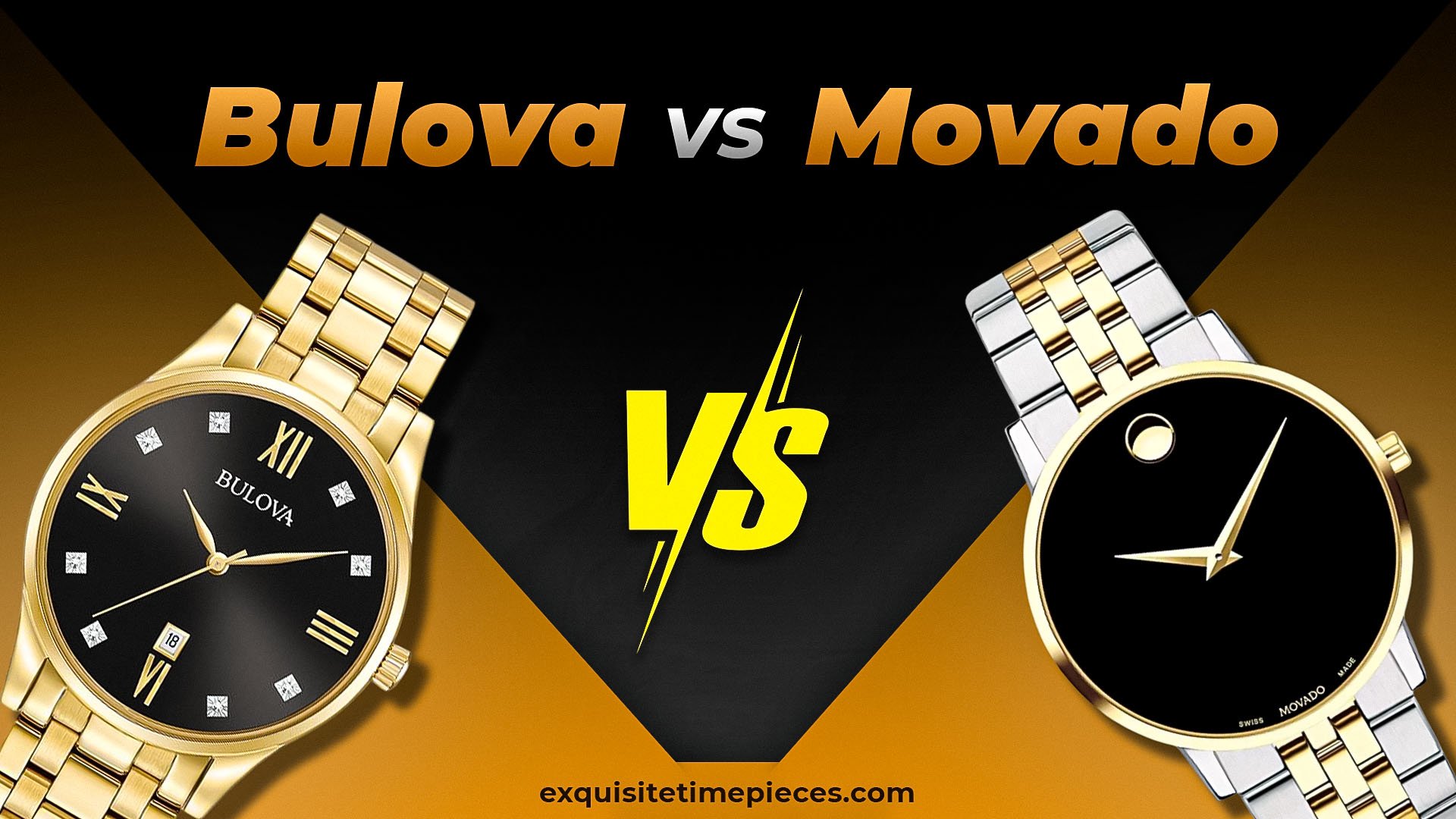
Bulova vs Movado: Which ICONIC American Brand Is Best?
Bulova and Movado. Two big names in the watch industry. Two watch manufacturers with American-based roots. In the years since their founding, both have become established and respected brands with historic achievements and celebrated models spanning their respective histories.
In recent decades, the two have come to occupy similar price points and could even be said to compete directly with one another. Certainly, for a prospective customer looking for a watch in the few hundred to under two thousand dollar price range, both Bulova and Movado provide a wide range of choices to pick from.
In this article, we’ll review the histories of both, draw comparisons between the brands, and ultimately pit specific models against each other to help readers decide which is the right choice for them. Let’s jump in.
About Bulova Watches
Bulova was founded in 1875 by Joseph Bulova, a visionary immigrant from Bohemia who first established a small jewelry shop in New York City. Driven by an unyielding passion for horology, Bulova set out to create timepieces of exceptional quality. Initially, the brand specialized in crafting precision timepieces and quickly gained a reputation as the market took notice.
In 1919, Bulova introduced the first-ever complete line of men’s and women’s wristwatches, revolutionizing how people kept time as pocket watches remained the general mode of timekeeping for the average person.
They continued to push boundaries and launched the world’s first clock radio in 1928, followed by the groundbreaking Accutron, the world’s first electronic watch, in 1960.
During this time, Bulova established itself as a pioneer in accurate timekeeping. Their Accutron watches, powered by a tiny tuning fork, offered unparalleled precision and reliability compared to traditional mechanical counterparts.
So impressive was their technology that NASA chose Bulova as the official timepiece for their Apollo lunar missions, eventually leading to a total of 46 missions together. Bulova’s Accutron timing instruments were vital in coordinating the intricate maneuvers required during these historic space expeditions.
Bulova has always been at the forefront of style and innovation. In the 1960s, they introduced the Caravelle line, offering fashionable yet affordable watches to a broader audience. The brand continued to innovate with the Accuquartz, the first affordable quartz watch for the mass market, in the 1970s.
In more recent years, Bulova embraced cutting-edge technology with the Precisionist collection, boasting an unprecedented level of accuracy (timing to 1/1000th of a second), and the Curv line, featuring the world’s first curved case and chronograph movement.
Bulova’s commitment to excellence and innovation has earned the brand a loyal following over the years. Their watches continue to be cherished for their exceptional craftsmanship, timeless designs, and superior accuracy.
Today, Bulova offers a diverse range of timepieces catering to various tastes and preferences. From classic dress watches to sporty chronographs, their collections showcase a fusion of heritage and contemporary aesthetics. At the end of 2007, the company was sold to the Japanese multinational conglomerate Citizen Watch Co.
About Movado Watches
The year was 1881 when a visionary young entrepreneur, Achille Ditesheim, founded a small watchmaking workshop in La Chaux-de-Fonds, Switzerland. It was here that the seeds of Movado were sown.
In 1905, Ditesheim officially registered the brand as “Movado,” which means “always in motion” in Esperanto, a language symbolic of universal communication, in tune with his passion for precision and innovation in watchmaking.
Over the years, Movado would produce a few iconic designs which would help characterize the brand’s design language into the modern era. Among the most defining features of Movado watches at this time is their iconic Museum dial.
Designed in 1947 by American artist Nathan George Horwitt in the school of Bauhaus style, the Museum dial revolutionized watch design with its minimalistic and distinctive appearance. Horwitt’s vision was to create a dial that captured the essence of time by removing all hour markers except for a single dot at 12 o’clock, symbolizing the sun at its zenith.
This groundbreaking design has since become a trademark of Movado and an epitome of modern elegance in the industry. Movado’s commitment to innovation continued to propel the brand forward. In 1959, they introduced the “Kingmatic” watch, among the first self-winding timepieces with a full rotor system.
This breakthrough solidified Movado’s reputation as a trailblazer in watchmaking technology. The brand’s dedication to design and innovation did not go unnoticed, and the brand received numerous accolades and prestigious awards. In 1960, the Museum dial was recognized by the Museum of Modern Art (MoMA) in New York, joining the museum’s permanent collection as a timeless example of industrial design.
This recognition further solidified Movado’s place in the pantheon of artistic timekeeping. Along these lines, the brand has also collaborated with renowned designers and artists to create limited edition collections that embody the fusion of art and horology.
One notable collaboration was with the legendary industrial designer Yves Béhar. Together, they created the Movado Edge collection in 2015, featuring strikingly modern watches that pushed the boundaries of design.
As Movado embarks on its next chapter, the brand continues to create watches that blend timeless design with cutting-edge technology. From the classic Museum dial to innovative complications and Swiss-made precision, Movado watches remain synonymous with refinement and understated style.
Today, the Movado Group’s list of brands includes Movado, EBEL, and MVMT (purchased in 2018), as well as licensed brands ranging from Coach, Lacoste, Calvin Klein, Tommy Hilfiger, and Hugo Boss.
Bulova vs Movado Watches: The Battle of The American Watch Brands
Now that we have brief histories of both companies under our belt, let’s get into the nitty gritty and explore a few areas of comparison between the two. As with any comparison (or all-out battle in our case), both brands have their particular strengths and weaknesses that may appeal to or act as detractors for different individual tastes.
Brand Recognition
Despite both companies being founded over a century ago and with all that heritage and historic recognition through the years, arguably, the more recognized brand in a modern-day context would be Movado.
Movado’s recognition overall breaks down to two factors: consistent design language and marketing. With the development of the Museum dial in 1947 and its subsequent entry into the Museum of Modern Art, Movado has become somewhat of a household name for those seeking elegant, timeless design.
Indeed, this level of simplicity in design is echoed across its model lines, from the traditional eponymous Museum Classic collection all the way to its hyper-modern BOLD lines. This makes Movado watches very distinct and easy to recognize. (much in the same way a Rolex watch could be easily spotted for its oyster case and bracelet).
In marketing, Movado doesn’t rely solely on authorized dealers to sell its product (ex: Kay Jewelers, department stores, etc.). The brand has Movado Company Stores across the United States to help sell products with knowledgeable employees and a full in-house customer experience.
Unfortunately, Bulova has become less of a known quantity since the mid-century due to its lack of marketing and focused product lineup until recently. As of late, Bulova is making strides with updated Accutron models and revived heritage models.
We’re seeing the brand participate in more watch enthusiast-based events such as Windup Watch Fair, increasing visibility for a far more niche group of customers. It’ll be interesting to see where this takes the brand, but as it stands, Movado wins recognition for the general public.
Model Variety
While Movado’s focused design language has helped define the brand and produced recognition in the public at large, it can also be a detriment when looking for a diverse variety of design choices to fit your personal tastes.
In this arena, Bulova takes the cake with their vast array of watches like the heritage-based MIL SHIPS, Lunar Pilot, and Devil Diver archive series entries, to ultra-modern integrated bracelet designs like the Series X or the classic dress watch Frank Sinatra collection (celebrating the brand’s ties to the famous entertainer).
A buyer is likely to find a watch that suits their tastes within the Bulova range, whereas, if the minimalist design isn’t to your taste, you’d be hard set to find such variety within Movado’s collections.
Build Quality & Durability
In the realm of build quality and durability, it’s safe to say both Bulova and Movado will provide similar levels of daily dependability and similar levels of case construction and finishing within their respective watches.
While this will depend on the particular model and activity of use, generally a dress watch from either brand will provide at least 30 meters of water resistance. In contrast, the sportier options will provide around 100 meters and more of water resistance (ex: dive watches).
Being on the dressier side, a larger amount of Movado watches may include ion-plated gold and diamonds as materials and finishing; however, both brands will generally use stainless steel on a wide range of their watches.
Movements
Similar to build quality and durability, both brands are on equal footing when it comes to their use of both quartz and automatic movements (automatic movements occupying the higher price points for Movado particularly) in their portfolio of watches.
That said, we must acknowledge the 2020 relaunch of the Accutron brand (under Bulova), which re-envisions the Accutron line of watches at luxury priced levels. It also utilizes a proprietary electrostatic movement, the likes of which made Bulova so groundbreaking in the 1960s and 70s in the original Accutron (particularly in the Accutron DNA model).
Price & Availability
Finally, when it comes to price and availability, we have…yet another tie. Both brands have watches occupying the two hundred dollars to four thousand dollars price range.
Both brands’ timepieces equally have a retail presence in brick-and-mortar shops and authorized dealerships (department stores, large jewelry chains, etc.), as well as having a wide selection on the internet through various channels (brand websites, Amazon, etc.).
While Movado does provide its own company stores in major markets, Bulova’s brand participation in niche watch enthusiast events as well as dedication to brand history in recent years, prove that accessibility to new audiences is a new focus and that the brand is seeking patronage by listening to what their most loyal fans want.
Bulova vs Movado Watches: Top Models Comparison:
In this section, we’ll pit specific watch models from each brand against each other, as well as the ideal buyer for each. Each will represent comparable allegories that a prospective buyer may consider when looking to fulfill a specific style or watch type. We’ll also include some hard data (including measurements) for your reference.
Bulova Classic (ref. 96B149) vs Movado Museum Classic
When looking for a versatile day-to-day timepiece that wouldn’t look out of place in the office or in casual environments, both the Bulova Classic (reference 96B149) and the Movado Museum Classic present a solid choice.
Both options are powered by quartz movements, are rated to 30 meters of water resistance, and feature stainless steel construction. While the Bulova Classic will present a better value at less than half the price of the Movado Museum Classic (not to mention the inclusion of a stainless steel bracelet. Movado has an upcharge here).
Explore the
Biggest Pre-Owned Collection of Luxury Watches
It’s also true that with the higher price of the Museum Classic, you’re buying into the brand name, heritage, and the added recognition you’d get from wearing a more popular/known timepiece.
That said, the Bulova would also wear better on smaller wrists, coming in at 38mm in diameter and a pronounced curvature of the lugs, which would drape well over any wrist.
| Bulova Classic (ref. 96B149) | Movado Museum Classic | |
| Case Size | 38mm | 40mm |
| Materials | Stainless Steel, Domed Mineral Crystal | Stainless Steel, Sapphire Crystal |
| Water Resistance | 30m | 30m |
| Movement | Quartz | Swiss Quartz |
| Strap | Stainless Steel | Leather or Stainless Steel |
| Additional Features | Integrated bracelet design with curved lugs to hug the wearer’s wrist. Patterned black dial for visual play | Classic minimalist design with plain black dial and silver-toned dot at 12:00. Hour and minutes hands only (no seconds hand) |
| MSRP | $295.00 | $595.00 (leather strap) $895.00 (stainless steel bracelet) |
Bulova Lunar Pilot vs Movado Heritage Series Calendoplan Chronograph
In the chronograph department, both Bulova and Movado have long, storied histories and accomplishments, which helped propel both forward as technological powerhouses in the last century. When comparing the Bulova Lunar Pilot and the Movado Heritage Series Calendoplan Chronograph, however, space geeks and historians might side with the Bulova, which is a direct descendant of the very watches used by NASA in the 1970s and Apollo 15 mission.
The Bulova comes standard with a stainless steel bracelet, as well as a higher water resistance rating (50m against the Movado’s 30m). On the other hand, the Movado focuses on a cleaner aesthetic with traditionally-styled chronograph pushers, case, and overall design on a Cognac leather strap for the same retail price. Impressively, the NP20 movement of the Bulova is also higher-tech, with a frequency of 262 kHz, 8 times greater than standard quartz movements, providing an accuracy of seconds within a year.
| Bulova Lunar Pilot | Movado Heritage Series Calendoplan Chronograph | |
| Case Size | 43.5mm | 43mm |
| Materials | Stainless Steel, Anti-Reflective Sapphire Crystal | Stainless Steel, Sapphire Crystal |
| Water Resistance | 50m | 30m |
| Movement | High Performance Quartz | Swiss Quartz Chronograph |
| Strap | Stainless Steel (NATO leather strap included) | Cognac Leather Strap |
| Additional Features | Same 43.5mm silver tone stainless steel case as the original NASA watch. NP20 Quartz Movement accurate within seconds a year | Blue dial with triangular indices, date window at 4:30 position. Swiss Super-LumiNova applied throughout |
| MSRP | $895.00 | $895.00 |
Bulova Marine Star Series B (ref. 96B256) vs Movado Series 800 Blue Chronograph Perpetual
In our final category of dive watch chronographs, we compare the Bulova Marine Star Series B (reference 96B256) with the Movado Series 800 Blue Chronograph Perpetual. Arguably, the Movado is more capable (200m depth rating vs. 100m) and more wearable for more wrists (at 42mm vs. 43mm).
But, at over twice the price of the Bulova, we should expect such levels of refinement over the Bulova. On aesthetic looks alone, the Movado is more classic in design with an oyster-like styled bracelet and traditional sub-dial layout, whereas the Bulova features an additional crown at 10 o’clock for an inner rotating bezel in lieu of an external rotating bezel as on the Movado.
| Bulova Marine Star Series B (ref. 96B256) | Movado Series 800 Blue Chronograph Perpetual | |
| Case Size | 43mm | 42mm |
| Materials | Stainless Steel, Mineral Crystal | Performance Stainless Steel and Aluminum. Sapphire Crystal |
| Water Resistance | 100m | 200m |
| Movement | Quartz, accurate to within 15 seconds/month | Swiss Quartz Chronograph |
| Strap | Stainless Steel | Performance Steel Link Bracelet |
| Additional Features | Includes fold-over clasp with push buttons, 6 hands with 1/20 second chronograph (up to 60 minutes), calendar, and small seconds hand | True divers watch with rotating bezel and trademarked Performance Steel bracelet for rugged durability |
| MSRP | $525.00 | $1,395.00 |
Conclusion
Ultimately, it’s a matter of taste and personal preference when deciding between Bulova and Movado watches, both brands having ties to American history. We’ve explored these histories and dived even deeper into direct comparisons across specific models between each brand.
However, overall it can broadly be said that a Movado buyer is one that is likely more interested in design and classic refinement, whereas a Bulova buyer might tend towards design variety and, increasingly, niche preferences such as the heritage-based reinterpretations and the Accutron sub-brand. Both brands will provide similar levels of material construction and dependability, as well as price point variety and movement tech.
Each has a long and storied history with representative models that have come to define each brand in the century since their respective foundations. While you can’t go wrong when choosing either, at the end of the day, it’s the stories and histories we build with our own personal watches we choose and wear that make them the objects we desire today. Godspeed!
Disclaimer: As an Amazon Associate, Exquisite Timepieces earns from qualifying purchases made through affiliate links. This helps support our website at no additional cost to you.
About Exquisite Timepieces
Established in 1998, Exquisite Timepieces is your one-stop shop for all things luxury watches! We are an authorized dealer for 60+ luxury watch brands including Omega, Hublot, Seiko, & Longines! We are proud to showcase one of the world’s largest pre-owned watch collections, including renowned brands like Rolex and Patek Philippe. Check out our brand new watch arrivals here and popular pre-owned listings here.


